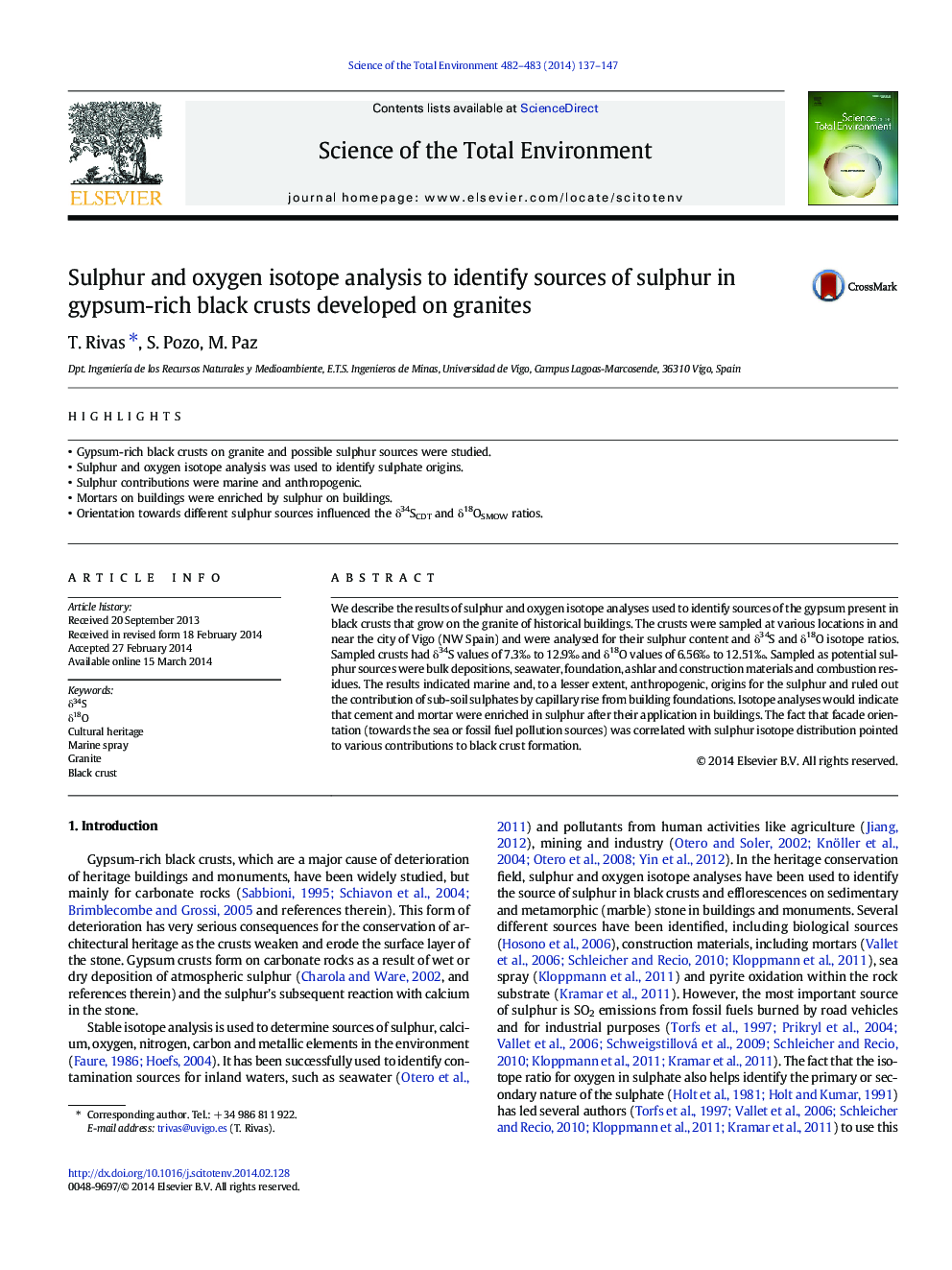| Article ID | Journal | Published Year | Pages | File Type |
|---|---|---|---|---|
| 6330696 | Science of The Total Environment | 2014 | 11 Pages |
Abstract
We describe the results of sulphur and oxygen isotope analyses used to identify sources of the gypsum present in black crusts that grow on the granite of historical buildings. The crusts were sampled at various locations in and near the city of Vigo (NW Spain) and were analysed for their sulphur content and δ34S and δ18O isotope ratios. Sampled crusts had δ34S values of 7.3â° to 12.9â° and δ18O values of 6.56â° to 12.51â°. Sampled as potential sulphur sources were bulk depositions, seawater, foundation, ashlar and construction materials and combustion residues. The results indicated marine and, to a lesser extent, anthropogenic, origins for the sulphur and ruled out the contribution of sub-soil sulphates by capillary rise from building foundations. Isotope analyses would indicate that cement and mortar were enriched in sulphur after their application in buildings. The fact that facade orientation (towards the sea or fossil fuel pollution sources) was correlated with sulphur isotope distribution pointed to various contributions to black crust formation.
Related Topics
Life Sciences
Environmental Science
Environmental Chemistry
Authors
T. Rivas, S. Pozo, M. Paz,
